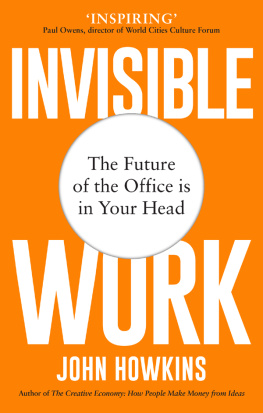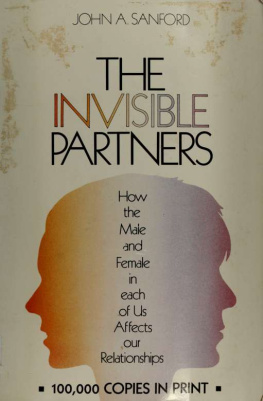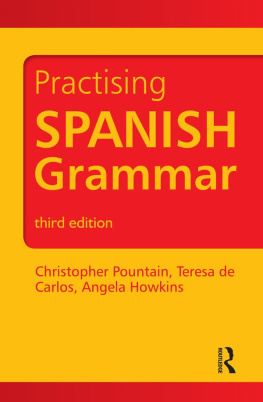John Howkins - Invisible Work: The Future of the Office is in Your Head
Here you can read online John Howkins - Invisible Work: The Future of the Office is in Your Head full text of the book (entire story) in english for free. Download pdf and epub, get meaning, cover and reviews about this ebook. genre: Politics. Description of the work, (preface) as well as reviews are available. Best literature library LitArk.com created for fans of good reading and offers a wide selection of genres:
Romance novel
Science fiction
Adventure
Detective
Science
History
Home and family
Prose
Art
Politics
Computer
Non-fiction
Religion
Business
Children
Humor
Choose a favorite category and find really read worthwhile books. Enjoy immersion in the world of imagination, feel the emotions of the characters or learn something new for yourself, make an fascinating discovery.
- Book:Invisible Work: The Future of the Office is in Your Head
- Author:
- Genre:
- Rating:3 / 5
- Favourites:Add to favourites
- Your mark:
- 60
- 1
- 2
- 3
- 4
- 5
Invisible Work: The Future of the Office is in Your Head: summary, description and annotation
We offer to read an annotation, description, summary or preface (depends on what the author of the book "Invisible Work: The Future of the Office is in Your Head" wrote himself). If you haven't found the necessary information about the book — write in the comments, we will try to find it.
John Howkins: author's other books
Who wrote Invisible Work: The Future of the Office is in Your Head? Find out the surname, the name of the author of the book and a list of all author's works by series.
Invisible Work: The Future of the Office is in Your Head — read online for free the complete book (whole text) full work
Below is the text of the book, divided by pages. System saving the place of the last page read, allows you to conveniently read the book "Invisible Work: The Future of the Office is in Your Head" online for free, without having to search again every time where you left off. Put a bookmark, and you can go to the page where you finished reading at any time.
Font size:
Interval:
Bookmark:

John Howkins is a leading figure in the global understanding of work, innovation and creativity, shaping business and government policy in Europe, China and South America. He is the author of the seminal The Creative Economy, which has been translated into 14 languages. He was previously chief adviser to HBO and Time Warner and chair of The London Film School, CREATEC, Tornado and BOP. John is a member of the United Nations Advisory Committee on the Creative Economy, and in 2006 the Shanghai government set up the John Howkins Research Centre on the Creative Economy. He is in wide demand as a speaker and adviser on creativity and innovation, working with individuals, start-ups, companies and governments.
Praise for Invisible Work
Fresh, original, powerful, profound and deeply practical. John Howkins makes visible the essential contours of working in a transforming world. If you want the secrets to a successful and satisfying life, read this book.
Jeremy Hunter, founding director of Executive
Mind Leadership Institute
John invites us to discover a world of unseen possibilities. In an age of invisibilities, he masterfully helps us understand that those who carry out the actual job of delivering creativity and innovation are the cornerstone of defining our modern world.
Felipe Buitrago, co-author of The Orange Economy and
The No Collar Economy
John Howkins books have proven clairvoyant; this new book is no exception. It is a must-read for innovation leaders. The seismic shift towards invisible work demands CEOs, entrepreneurs and managers rethink how to lead teams whose heavy lifting happens in the mind. Johns book gives a roadmap for understanding and navigating this new landscape.
Alice Loy, CEO and co-founder of Creative Startups
This wise and inspiring book shows us the true meaning of work in the 21st century ... Essential reading for anyone in pursuit of a more productive and purposeful life.
Paul Owens, founder and chair of BOP Consulting and
director of the World Cities Culture Forum

1 3 5 7 9 10 8 6 4 2
This paperback edition published 2021 by September Publishing
First published in 2020 by September Publishing
Copyright John Howkins 2020, 2021
The right of John Howkins to be identified as the author of this work has been asserted by him in accordance with the Copyright Designs and Patents Act 1988.
All rights reserved. No part of this publication may be reproduced, stored in a retrieval system, or transmitted in any form or by any means, electronic, mechanical, photocopying, recording or otherwise, without the prior permission of the copyright holder
Infographic on p76 by Diego / ASKEO
Typeset by Ed Pickford
Printed in Poland on paper from responsibly managed,
sustainable sources by L&C Printing Group
ISBN 978-1-912836-76-5
September Publishing
www.septemberpublishing.org
Preface to New Edition:
Covid-19 The Great Disruption
The disappearance of work. What do we want? A personal choice. Knowledge and creativity are not enough. A new model. The three aims: purpose, autonomy and opportunity.
The difference between work and a job. A job sets the scene but work makes the difference. Work is expanding but what exactly are we doing all day long, and why? The tension between a companys requirements and personal interests.
The global forces that are changing work beyond recognition and making it hard to measure and reward fairly. Working from Home. Taking Charge, Plural Work. The Four Circles.
Managing ones mind. The moment when understanding and feeling fuse together and change perception. Invisible work is private, personal and subjective. The Two Judges. Speaking the language of invisibility.
How to start. Who Am I? The power to be single-minded in a group; to be alone and yet together. Being with the right people in the right place. Becoming an insider.
Getting thoughts from my head into your head. Turning thought into action. Stepping up. How to frame, name and define. The link between effort and pay. Negotiation.
Taking charge by setting up a business. Using company law and digital platforms to add value. Peak employment. Fragmentation. A dance of masks. Work hides away from public gaze.
Working from home. The brain-as-office and the city as a meeting place. Offices are base camps for a network of relationships. Cafs and backpacks.
The capacity of artificial intelligence for invisible work. The difference between human and AI versions of invisible work. Humans are better at explaining. Some principles for co-working with AI.
Choosing the future of work. The rise of invisible work threatens the life/work balance. How to negotiate a new balance. Flexible work, a four-day week and a universal basic income. Work as if people matter.
COVID-19 THE GREAT DISRUPTION
The Covid-19 pandemic disrupted almost every kind of work. Millions of people who had always gone out to work were suddenly asked to stay at home and work there, if they could. Offices were abandoned and high streets were empty. It was the most abrupt and total change to working life ever known and a shock to many peoples routine, income, identity and friendships.
We began to think about work, our work, as never before, as individuals, household by household and company by company. Online suddenly became the new normal or, as I prefer to say, the new temporary, one of many to come. The psychological impact is still unclear, but the consensus is that people coped surprisingly well if their work was cognitive and nomadic, and they had a good life/work balance. They became pioneers of a new way of working. Others struggled because of the nature of their work or their personal circumstances or perhaps their employers attitude.
We became more aware of the relationship between us and our work, which in turn affected the relationship between us and our company and our companys office. Speculation about the future of work switched from the nature of automation and its effects on jobs to personal freedom and autonomy and the role of work in our lives. Trends that had been barely noticeable were suddenly mainstream (such as cognitive agility and hybrid working). Many said the pandemic had accelerated existing trends rather than revealed new ones.
Before the pandemic, many regarded working at home as a little quirky, if not self-indulgent, and not for them. The proportion of office workers who expected to work more often at home in the future was around 10 per cent in 2019. Within six months it rose to nearly 70 per cent. A Cisco survey of 10,000 office workers, Workforce of the Future, reported a staggering 87 per cent of workers wanted to be able to choose whether to work from home or in the office, and manage their hours, even when offices open up. The numbers are likely to fall back as offices re-open but they will surely not fall back to 10 per cent. The future is coming closer.
Change often starts slowly and then gathers pace. Since writing The Creative Economy I have spent 20 years talking with individuals and companies around the world about the nature of work and particularly work that increases the prospects for creativity and innovation. Everyone I talked with had their own approach (which can be irritating to colleagues) but they do share some distinctive characteristics.
Font size:
Interval:
Bookmark:
Similar books «Invisible Work: The Future of the Office is in Your Head»
Look at similar books to Invisible Work: The Future of the Office is in Your Head. We have selected literature similar in name and meaning in the hope of providing readers with more options to find new, interesting, not yet read works.
Discussion, reviews of the book Invisible Work: The Future of the Office is in Your Head and just readers' own opinions. Leave your comments, write what you think about the work, its meaning or the main characters. Specify what exactly you liked and what you didn't like, and why you think so.











